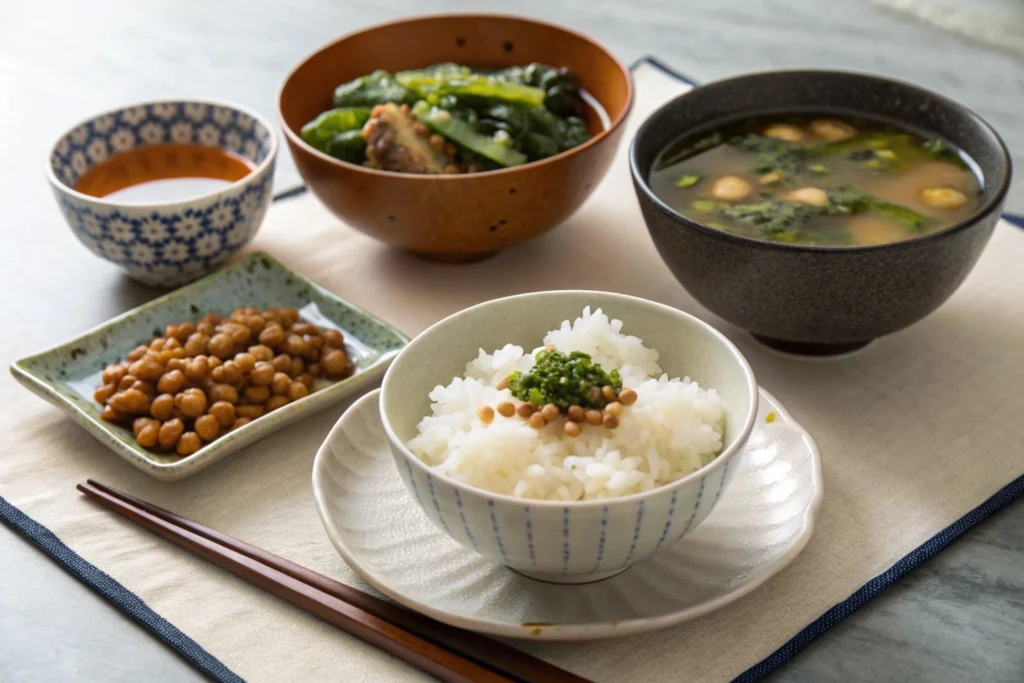When people think of biota Japanese food, they often envision intricate dishes like natto, kombu-based broths, or a platter of delicately prepared seafood. Yet, the term biota in Japanese cuisine stretches beyond single ingredients. It encompasses the entire ecosystem of microorganisms, algae, fermented foods, and other living organisms that shape Japan’s diverse culinary landscape. From tangy pickles teeming with beneficial bacteria to kombu-laden stocks brimming with umami, Japanese cooking has long harnessed the power of its biota to create unforgettable flavors and health benefits.
Throughout this comprehensive guide, we’ll unravel the meaning of “biota” in Japan’s culinary context, delve into the history and science behind iconic dishes, and provide practical insights on how to enjoy these microbial wonders at home. If you’re new to the intricacies of Japanese cuisine or simply curious about how biota influences taste and tradition, read on for an in-depth look at one of the most fascinating facets of Japan’s gastronomic heritage.
Discover additional Japanese delicacies that expand your palate beyond biota-focused dishes.
Introduction
Biota, in the context of japanese foods with names, refers to the living organisms—microbes, algae, and beneficial bacteria—that shape Japan’s distinctive flavors and nutritional profiles. Far from just being “raw fish” or “steamed rice,” many Japanese dishes derive their depth from these invisible or often overlooked elements. Think of tangy natto (fermented soybeans) or pungent kimchi-inspired pickles; such creations owe their existence to microbes working behind the scenes.
The cultural significance of biota Japanese food goes beyond taste. Traditional fermentation methods and algae utilization, like kombu for dashi stock, illustrate how Japanese cooks harness living organisms to unlock umami (the “fifth taste”) and health benefits. While modern science increasingly validates the importance of microbiomes and probiotics, Japan has quietly championed these principles for centuries through daily staples like miso soup and pickled vegetables.
Ready to discover how beneficial microorganisms, algae, and time-honored techniques converge to form some of the most iconic Japanese dishes? Let’s explore the realm of biota, from katsuo-bushi (fermented fish flakes) to kombu seaweed and natto. For those wanting to further deepen their Japanese cooking skills, here’s a helpful link to japanese-chicken-fried-rice-recipe, a dish that can integrate fermented sauces or pickled side dishes enhanced by Japan’s rich biota.
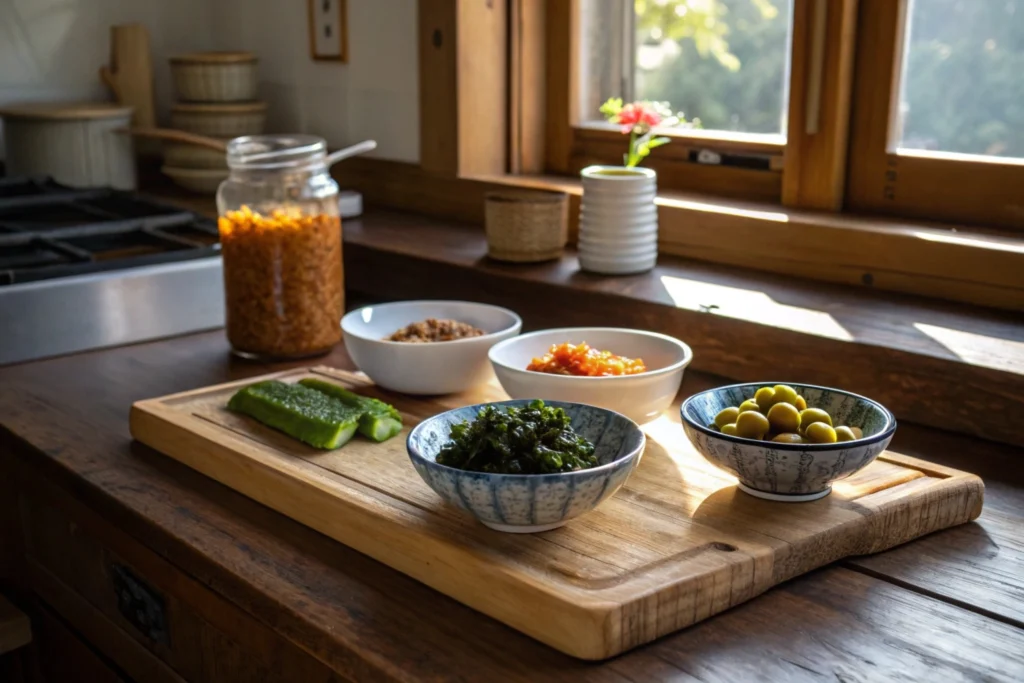
1. What is Biota in Japanese Food?
When we discuss biota definition japanese in the culinary sense, we refer to the range of living organisms—particularly microorganisms—used in food preparation. Biota in Japanese cuisine is deeply interwoven with the concept of shokubunka (food culture), highlighting the synergy between nature, microbes, and human creativity.
Defining Biota
- Microbial Marvels: Fermentation is at the heart of Japanese cooking, from soy sauce to sake. Microbes like Aspergillus oryzae (koji mold) convert simple ingredients into complex, flavorful staples.
- Seaweed & Algae: Sea vegetables (kombu, wakame, nori) are not only vital for flavor but also brim with minerals and vitamins.
- Miso & Beyond: Biota-driven processes transform boiled soybeans into umami-rich miso paste or tangy natto, each with distinct microbial footprints.
Biota vs. Simple Ingredients
Some might wonder: is biota Japanese? The short answer is yes—though microbial fermentation and algae usage exist worldwide, Japan’s approach stands out for its meticulous craftsmanship and wide integration across daily meals. For instance, kombu-based dashi stock is a staple, bridging many dishes with a subtle oceanic essence.
Health Implications
Biota-based foods typically contain probiotics, beneficial enzymes, and high mineral content. Miso soup, for example, supports gut health through lactic acid bacteria. Meanwhile, kombu’s glutamates intensify flavors without excessive salt, aligning with modern health trends.
Cultural Significance
- One Food Japan is Known For: Natto, revered for its sticky consistency and pungent aroma, exemplifies how microbial action fosters a polarizing yet culturally emblematic dish.
- Balancing Tradition & Modernity: While advanced technology aids in mass-producing fermented items, small-scale artisans safeguard age-old methods, ensuring that the unique local microbial strains endure.
To experience the marriage of microbial magic and classic Japanese flavors, try a kombu-infused vegetable stew or miso-based marinade—perhaps referencing our vegetables-japanese-recipe for ideas on pairing produce with fermented sauces.
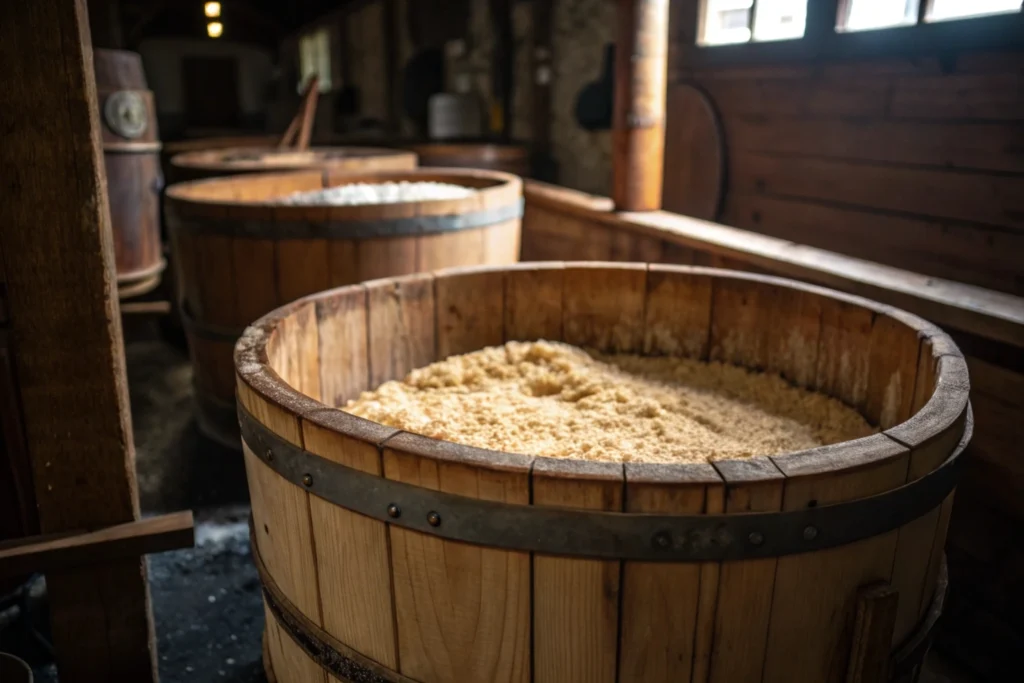
2. Fermented Foods: The Heart of Japan’s Biota
Fermentation stands at the core of many Japanese dishes, acting as the linchpin of names of japanese foods like natto, miso, and soy sauce. This age-old process not only extends shelf life but also amplifies flavor depth, texture, and nutritional value—making fermented products synonymous with Japan’s top culinary offerings.
Natto: Fermented Soybeans
- Characteristics: Natto features sticky, stringy threads from Bacillus subtilis natto bacteria, creating a gooey, somewhat pungent product.
- Nutritional Punch: High in protein, vitamin K2 (boosting bone health), and beneficial enzymes.
- Acquired Taste: While some find natto’s aroma off-putting, others savor its rich, umami flavor. Often eaten over hot rice with a bit of soy sauce or mustard.
Miso: Versatile Paste
- Types of Miso:
- White Miso (shiro miso): Milder and slightly sweet.
- Red Miso (aka miso): Aged longer for bolder flavors.
- Mixed Miso (awase miso): A balanced blend.
- Culinary Uses: Soups, marinades, dressings, and pickling. Rich in probiotics and antioxidants.
- Production: Koji mold transforms cooked soybeans into a thick, savory paste over months of fermentation.
Soy Sauce (Shoyu)
- Brewed Complexity: Traditional soy sauce ages for months or years in cedar vats, yielding complex, layered tastes.
- Varieties: Light shoyu for final seasoning, dark shoyu for cooking, and tamari (wheat-free) for those with gluten sensitivities.
- Global Reach: Beloved worldwide, forming the backbone of many japanese foods with names recognized internationally.
Koji and Sake
- Koji’s Role: A filamentous fungus (Aspergillus oryzae) essential for making miso, soy sauce, and sake. Converts starches into simpler sugars, fueling further fermentation.
- Sake: Japan’s rice wine relies on koji’s enzymatic magic to break down rice starch into fermentable sugars, resulting in a fragrant, complex drink.
Benefits of Fermentation
- Enhanced Flavor: Bacterial and enzymatic actions yield deep umami tastes.
- Preservation: Before refrigeration, fermentation was vital for shelf-stable condiments.
- Health Gains: Probiotic-rich foods potentially improve gut health, digestion, and immune function.
Cultural Ties
The reverence for microbial processes reflects Japan’s spiritual connection to nature and respect for minimal waste. Traditional communities often pass down starter cultures, preserving unique local strains for generations.
For a fermented twist in your cooking, consider pairing a miso marinade with grilled seafood or referencing our japanese-bbq-sauce-chicken-recipe-authentic-and-easy that merges fermented sauce bases with grilled chicken.
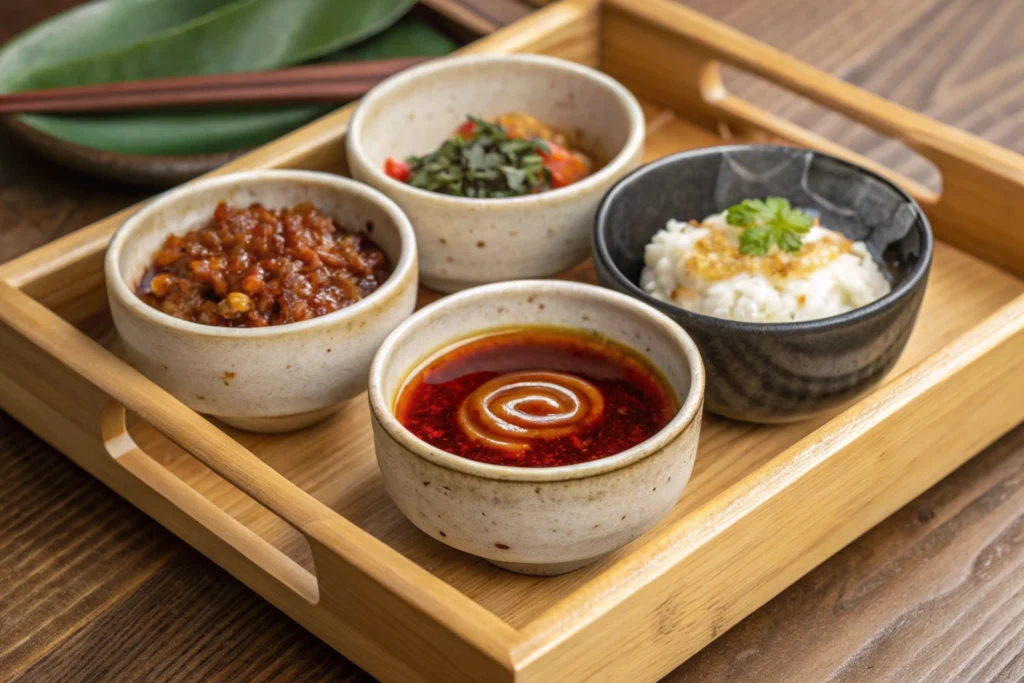
3. Sea Vegetables and Algae: The Ocean’s Contribution
Beyond microbes, biota Japanese food also hinges on sea vegetables like kombu, wakame, and nori, which significantly shape Japan’s seafood-centric cuisine. These algae not only bring forth oceanic flavors but also provide essential minerals, vitamins, and health benefits.
Kombu (昆布)
- Profile: Thick, dark green seaweed commonly harvested off Hokkaido’s coasts.
- Umami Source: Kombu is the backbone of dashi stock, thanks to its glutamic acid content. Chefs simply simmer kombu in water to extract flavor.
- Nutritional Edge: Rich in iodine, fiber, and minerals. A staple in various soups, stews, and pickling processes.
Wakame (わかめ)
- Appearance: Soft, tender texture when rehydrated; vibrant green color.
- Uses: Often found in soups (like miso soup) or salads (like sunomono).
- Health Boost: Contains fucoxanthin, a compound linked to metabolism support, plus antioxidants.
Nori (海苔)
- Applications: Thin sheets used for sushi rolls, onigiri wrappings, or toppings for soups.
- Flavor: Brings a salty, slightly sweet dimension that complements rice and seafood.
- Popularity: The Western world recognizes nori primarily through maki rolls, exemplifying how Japanese sea vegetables have gone global.
Green Algae and More
- Spirulina & Chlorella: Although less traditional in mainstream Japanese diets, these microalgae are researched for their nutrient density. They occasionally appear in health-focused recipes.
- Sea Lettuce (Ulva): Another oceanic leaf gaining popularity for salads and soups.
Sourcing & Quality
- Wild-Harvested vs. Farmed: Many regions in Japan specialize in certain seaweeds, controlling quality from harvest to processing.
- Preservation: Dried, salted, or freeze-dried forms ensure sea vegetables remain accessible year-round.
Culinary Pairings
- Dashi: The classic Japanese stock often combines kombu with katsuobushi (fermented fish flakes) for a robust base to soups and sauces.
- Salads & Stir-Fries: Wakame and nori can be quickly added to salads or tossed with sesame oil for a quick side dish.
- Fusion: Seaweed snacks, nori chips, or wakame-based dips illustrate how modern innovation reimagines algae in casual fare.
Expand your sea vegetable repertoire by exploring our vegan-japanese-recipes, where seaweeds frequently substitute for fish stock or add flavor to plant-based dishes.
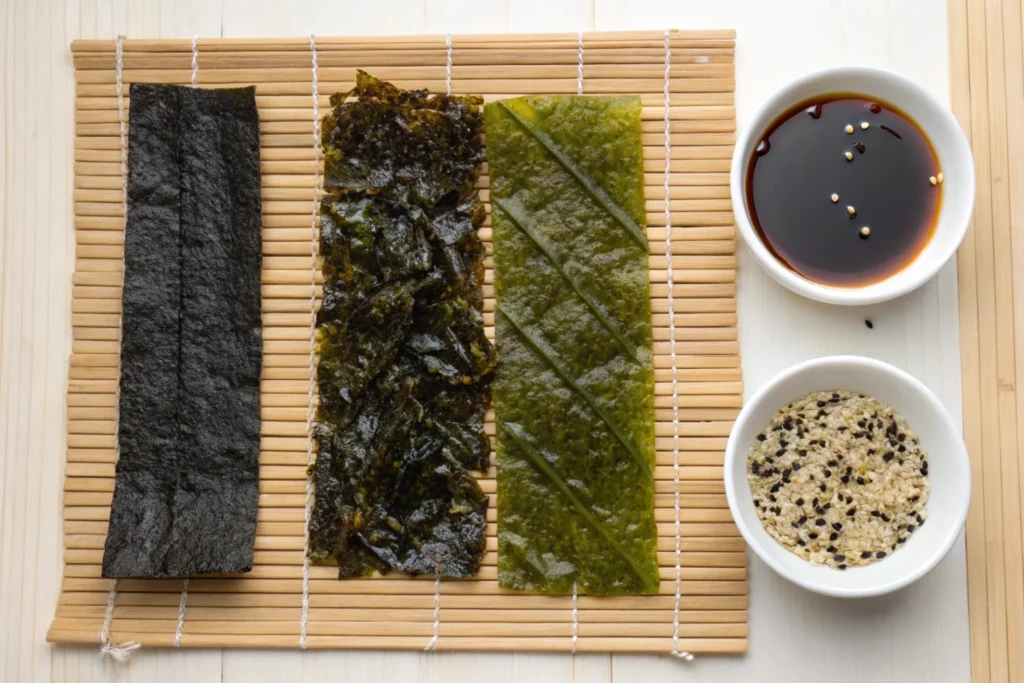
4. Cultivating Microbes in Japanese Cooking
Japan’s love for fermentation and sea vegetables arises from a deep-rooted respect for nature’s living systems. Skilled artisans harness microbes to transform raw ingredients—soybeans, grains, fish—into umami-rich staples.
Koji Mold (Aspergillus oryzae)
- Role in Fermentation: Koji breaks down complex proteins and starches, kickstarting the transformation of soybeans into miso or soy sauce.
- Flavor Implications: Develops sweet, earthy, or subtly acidic notes, depending on fermentation length.
- Cultivation: Rice or barley is inoculated with koji spores in temperature- and humidity-controlled environments, ensuring consistent growth.
Yeasts and Bacteria
- Sake Yeasts: Specialized yeast strains produce aromatic sake, each strain shaping distinct flavor profiles.
- Lactic Acid Bacteria: Key in pickling vegetables (tsukemono) and producing tangy profiles in some marinades.
Environmental Factors
- Local Terrains: Differences in climate and water quality yield unique microbial strains. For instance, miso from the mountainous Nagano region tastes different from that in coastal regions.
- Craftsmanship: Veteran brewers or miso masters carefully manage fermentation, balancing temperature, time, and aeration.
Innovation and Modern Demand
- Restaurant Trends: Chefs incorporate fermented condiments in unexpected ways—like miso-based desserts or kombu-infused cocktails.
- Health Awareness: The global probiotic movement aligns with Japan’s long-standing reliance on fermented staples, raising demand for authentic, unpasteurized products.
- Global Crossovers: International chefs adopt Japanese fermentation techniques to craft soy sauce variations or kimchi-esque pickles with local produce.
Challenges and Solutions
- Scalability: Industrial production sometimes compromises the delicate microbial ecosystem, requiring precise quality checks.
- Authenticity: Rapid fermentation methods or artificial flavor enhancements risk losing the complexity that defines biota Japanese food.
- Preservation: Real fermented items can continue aging or souring over time, necessitating cold storage or specific packaging.
For an at-home introduction, see our minced-beef-japanese-recipe to incorporate fermented soy sauce or miso-based marinades, harnessing microbial processes to elevate everyday dishes.
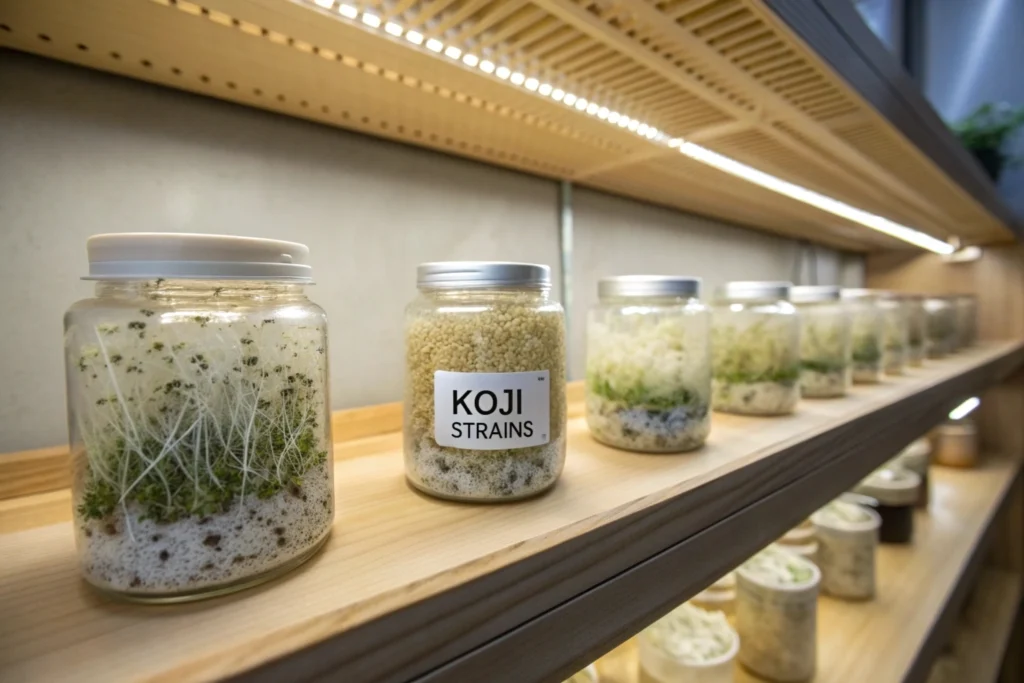
5. Balancing Flavor and Health
The biota Japanese food domain intricately weaves taste with wellness. Fermented dishes and sea vegetables reflect Japan’s holistic approach: create meals that not only delight the palate but also nourish the body. Let’s explore how these microbial and algae-based foods accomplish both.
Probiotic Power
- Gut Health: Foods like natto and pickles are rich in lactic acid bacteria, potentially benefiting digestion and immunity.
- Moderation: Some fermented products, like high-sodium miso, require mindful consumption. Pair them with fresh vegetables to offset the salt content.
Micronutrient Density
- Seaweed’s Mineral Boost: Kombu, wakame, and nori supply iodine, calcium, and magnesium. Combining them with tofu or fish yields a nutrient-packed meal.
- B Vitamins & Soy: Fermented soy products contain B vitamins, supporting metabolism and energy production.
Flavor Synergy
- Umami: The “fifth taste” is abundant in fermented fish flakes, miso, and kombu. Combining multiple umami sources can intensify depth, allowing for less salt usage.
- Contrast: Crisp, fresh produce or lightly pickled sides can balance the richness of fermented mains, creating a harmonious meal.
Culinary Techniques for Better Health
- Low-Temperature Fermentation: Preserves beneficial enzymes while reducing harsh flavors.
- Short-Cooking Sea Vegetables: Overcooking can degrade nutrients in seaweed; quick blanching helps retain texture and vitamins.
- Pairing with Whole Grains: Brown rice, barley, or buckwheat noodles complement fermented foods, improving glycemic control.
Mindful Eating
- Portion Control: Even healthy foods can become detrimental when overconsumed. Miso is nutrient-rich but salty; small servings suffice.
- Seasonal Variation: Eating with the seasons ensures maximum freshness and nutrient density, aligning with Japan’s respect for nature’s calendar.
Practical Applications
- Everyday Meals: Start your morning with miso soup or a small portion of natto over rice for a probiotic kick.
- Creative Use: Turn leftover miso into a marinade for meats or an umami-enriched salad dressing.
- Balancing the Plate: Match intense fermented flavors with mild vegetables or grilled proteins.
If you’re eager to try seaweed-infused healthy recipes, peek at our japanese-vegan-recipes, where abundant plant-based options harness microbial magic and algae benefits.
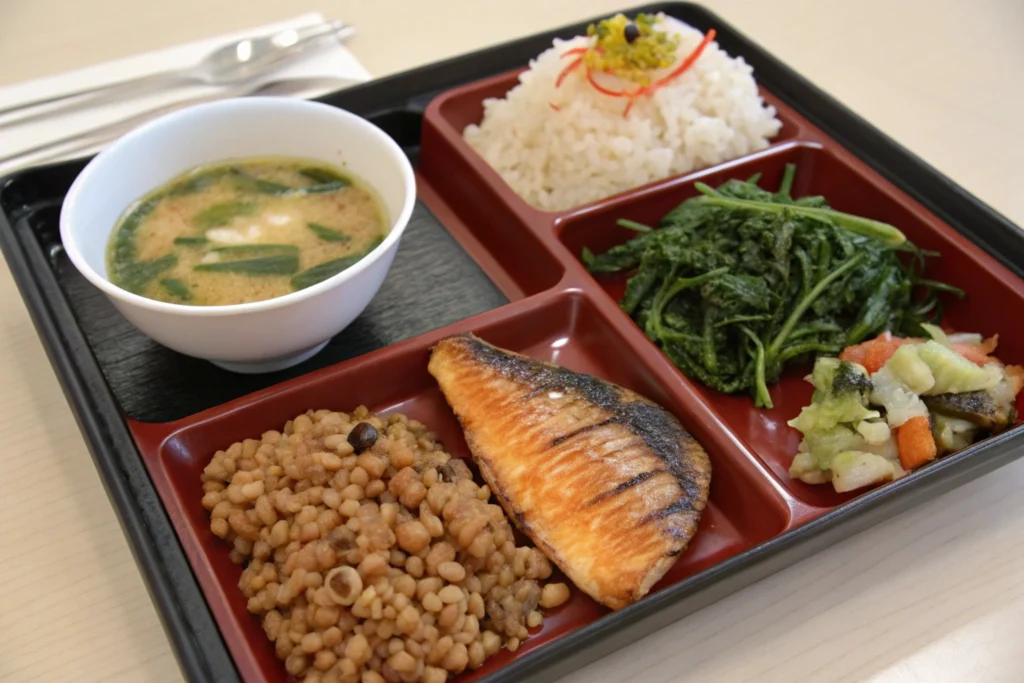
History and Context
The story of biota Japanese food is as ancient as Japan’s earliest settlements. From rudimentary fermentation pits to sophisticated modern-day breweries and factories, the evolution mirrors Japan’s broader societal changes—from feudal isolation to global integration.
Early Roots
Prehistoric communities, reliant on hunting and fishing, discovered that salting or burying fish extended its usability. Over time, trial-and-error led to more advanced fermentation methods, spurring the development of distinct foods like narezushi (ancient sushi) and shiokara (fermented seafood paste).
Influence of Buddhism
By the 6th century, Buddhism’s arrival encouraged vegetarian diets among monks, prompting the fermentation of vegetables and tofu as a protein source. Temple cuisine, or shojin ryori, capitalized on microbial processes to intensify flavors in plant-based ingredients.
Feudal Era Innovations
During the Edo period (1603–1868), increased trade and internal stability sparked a culinary renaissance. Coastal regions refined kombu harvesting methods, establishing a thriving seaweed trade. Meanwhile, sake breweries honed their craft, aided by precise understanding of koji mold. Fermented condiments like miso and soy sauce became household staples, each region championing unique recipes.
Modern Transformations
The Meiji Restoration (1868) ushered in Western influences. Meat consumption rose, introducing tonkatsu and other “fusion” dishes. Despite these changes, traditional fermentation endured. In the post-war era, Japan’s economic boom and technological advancements further standardized fermentation processes, ensuring consistent quality and safer distribution across the nation.
Global Recognition
Today, Japanese fermented goods and seaweeds resonate worldwide, revered for their nutritional profiles and complex flavors. Chefs in Paris, New York, and beyond integrate kombu or miso into haute cuisine, highlighting how biota Japanese food transcends borders.
Throughout history, Japan’s reverence for nature and clever harnessing of microbial processes have shaped a cuisine that stands among the world’s finest. Biota principles—embracing living organisms for culinary enrichment—embody the depth and resilience of Japanese food heritage.
For a sweet slice of Japan’s historical cooking, see our traditional-japanese-desserts-recipe for confections that reflect centuries of evolving tastes.

Practical Examples/Use Cases
1. Home Chef Experimentation
Sarah, an adventurous home cook, decides to incorporate biota Japanese food into her repertoire. She begins by fermenting her own miso using koji purchased online. Over the following months, she observes the paste transition from sweetly mild to richly robust. This homemade miso eventually stars in soups, marinades, and salad dressings, cutting back on salt while boosting umami.
2. Restaurant Tasting Menu
In Kyoto, a fine-dining establishment crafts a biota-focused tasting menu, blending fermented fish sauce with kombu-infused broths, culminating in a natto dessert that challenges diners’ preconceptions. Each course showcases a different microbe or seaweed variety, offering a gourmet lesson in Japan’s culinary biodiversity.
3. Healthy Lifestyle Integration
John, a fitness enthusiast, adds natto to his morning routine, praising the dish for its probiotic and protein content. Complementing that with seaweed salads for lunch, he reports improved digestion and more stable energy levels. For dinner, he references our steak-japanese-recipe but swaps standard sauces for miso-based glazes, melding protein with microbial benefits.
4. Community Workshop
A local community center in Los Angeles hosts a workshop on fermenting vegetables the Japanese way. Attendees learn how to prepare tsukemono (pickled veggies) using lactic acid bacteria from rice bran (nukadoko). Participants walk away confident in making healthy, tangy pickles at home, forging a deeper connection to Japan’s biota methods.
These real-world scenarios highlight how biota Japanese food enriches everyday eating. From artisanal restaurants to individual home cooks, fermentation and algae usage create depth, complexity, and well-rounded nutritional profiles. Whether you’re marinating chicken with miso or adding kombu to your soup stock, there’s no shortage of ways to embrace Japan’s living, breathing culinary heritage.
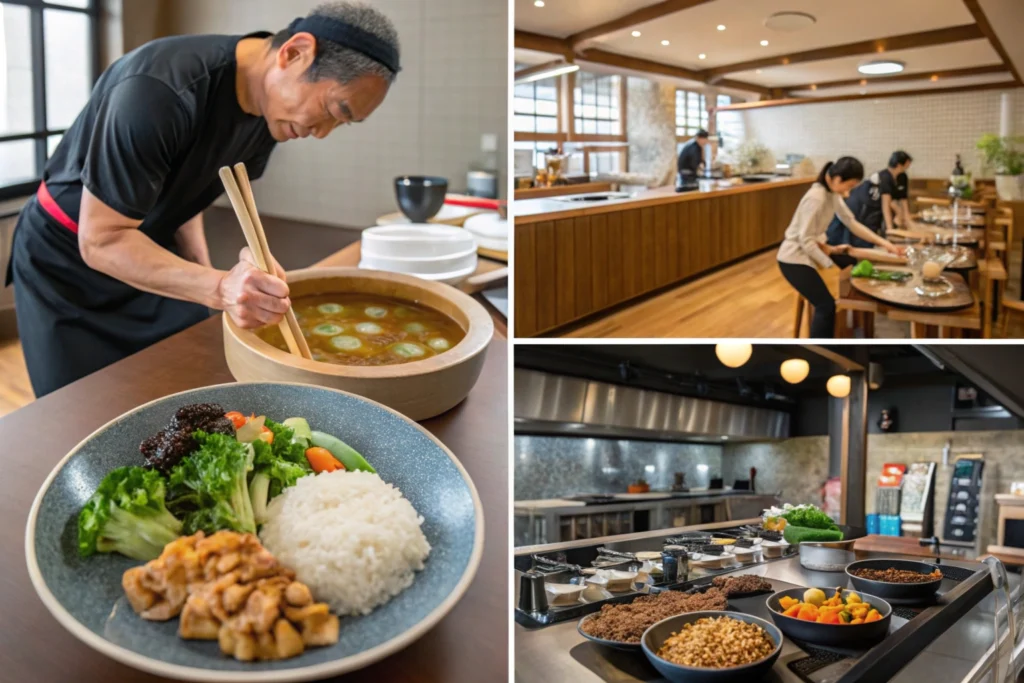
FAQs
Q1: What is Japanese food called natto?
Natto refers to fermented soybeans recognized for their sticky texture and strong aroma. They’re made by fermenting boiled soybeans with Bacillus subtilis. Despite a pungent smell, natto is lauded for its high protein and probiotic content, often enjoyed over rice for breakfast.
Q2: What is kombu Japanese food?
Kombu is a type of kelp central to Japanese cuisine, forming the backbone of dashi stock. Harvested mainly in Hokkaido, kombu contributes a rich umami taste, essential for soups and sauces. It also appears in pickling or as an ingredient in stewed dishes.
Q3: What is green algae Japanese food?
Green algae, such as wakame or umibudo (sea grapes), appear frequently in Japanese salads and soups. High in nutrients, these algae are either lightly blanched or served raw to maintain their crisp, oceanic flavor.
Q4: What is the most popular Japanese food?
While opinions vary, sushi and ramen consistently rank among Japan’s most popular dishes globally. However, everyday staples like miso soup, natto, and tonkatsu also hold significant cultural weight.
Q5: How do I introduce biota Japanese food into my diet?
Start small with miso soup or kombu-based broth. You can gradually incorporate fermented items like natto, soy sauce, or pickled vegetables into meals, expanding your palate as you become accustomed to tangy, umami-rich flavors.
Q6: Are these microbial and algae-based dishes safe for children?
Generally, yes. Many Japanese children grow up eating foods like miso soup and nori. However, some items—like natto or strong-smelling seaweeds—may require an acquired taste. Start with mild varieties, ensuring they’re age-appropriate.
Q7: Can I find these ingredients outside Japan?
Yes, specialized Asian grocery stores and online retailers supply products like natto starter, kombu, wakame, and koji rice. Always check for fresh or high-quality items to ensure the best flavor and nutritional benefits.
Conclusion
Exploring biota Japanese food reveals an intricate world where microorganisms, sea algae, and time-honored techniques converge to produce some of the most revered dishes in Japan. From natto’s stringy texture to kombu’s umami-laden dashi, these elements shape the backbone of Japanese cuisine, delivering health benefits and flavor complexities well beyond the typical sushi platter.
Whether you’re fermenting miso at home, experimenting with natto for breakfast, or sprinkling nori flakes over your soup, you’re partaking in a tradition that celebrates living cultures and oceanic treasures. Embracing these foods can enhance your culinary creativity, enrich your nutritional intake, and foster a deeper appreciation for Japan’s symbiotic relationship with nature.
Ready to take the plunge? Incorporate fermented sauces into your stir-fries, sample a kombu-infused stew, or explore authentic-japanese-barbecue-sauce-chicken-recipe-easy-delicious to witness firsthand how microbial and sea-based wonders elevate everyday meals. By championing the power of microbes and marine vegetation, we preserve time-tested techniques that continue to evolve—and delight—across centuries of Japanese gastronomic heritage.
